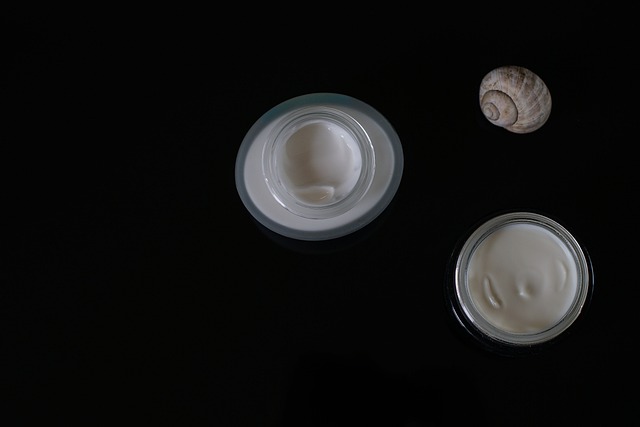Elastin is a protein that your body naturally manufactures. Fuction of elastin is to provide elasticity to many tissues and organs, like your skin, blood velssels, heart tendons, ligaments, and heart.
Supplements may assist your body in producing more elastin, but there isn’t enough scientific evidence to draw firm conclusions. A well-balanced diet provides your body with the necessary materials it requires to organically produce elastin.
What exactly is elastin?
Elastin is one of your body’s most abundant proteins. It’s a rubber-band-like protein that can stretch out (extend) and shrink back in (recoil). Elastin is an important component of tissues in your body and its function is to be stretchy, such as your lungs, bladder, big blood arteries, and some ligaments. Smaller quantities can be found in your skin and ear cartilage.
Is elastin a kind of collagen?
No, elastin is not a kind of collagen. However, elastin and collagen are two proteins that are frequently mistaken for one another. Indeed, healthcare experts who research tissue structures at the microscopic level (histologists) utilize special dyes and chemicals to stain the main aspects of bodily tissues and demonstrate the distinctions. These dyes turn any elastin-rich structures in your body brown or purple.
Collagen’s primary function in the body is to provide structure, strength, and support.
The primary function of elastin in the body is to give stretchiness, and it is approximately 1,000 times stretchier than collagen.
How is elastin made?
To produce elastin, many molecules of tropoelastin, a big, flexible molecule, bind together.
What is the role of elastin?
The primary purpose of elastin is to allow tissues in your body to stretch and contract.
Your arteries are blood vessels that are tube-shaped and transmit blood from your heart throughout your body. Elastin makes your arteries elastic, making it easier for your heart to pump blood.
Elastin permits your lungs to function similarly to an elastic sack.
Every time you take a deep breath, your diaphragm contracts (tightens). As your lungs contract, they generate potential energy, which is stored in the elastic tissues of your lungs. When you exhale, the potential energy stored in your lungs is released as your lungs contract.
Elastin in your skin degrades as you age.
For instance, place one of your hands in front of your body, palm down. Pinch the skin on the top of your outstretched hand with your other hand and hold it for several seconds.
Elastin allows your skin to stretch. If your skin contains a lot of elastin, the skin on the top of your hand will retract back into place relatively fast when you stop pinching. If your skin lacks elasticity, it may take up to seconds for your skin to shrink back into place.
Where can you find elastin?
Elastin can be found in the dermis layer of your skin, your lungs, blood vessels, ligaments, ear cartilage, and other components of your body that require elasticity.
How does elastin appear?
The structure of elastin is debatable. Some people assume that elastin is a random network of polypeptide chains while it is at rest. Others think the polypeptide chains are disordered but not random. When stretched, however, the chaotic structure reduces as the chains align themselves while preserving strength and flexibility.
What is the color of elastin?
Elastin is the principal component of your body’s yellowish elastic fibers.
What is the composition of elastin?
Proteins are made up of amino acids. Proline, glycine, desmosine, and isodesmosine are the four major amino acids that make up elastin. They form strong, flexible structures by grouping them in short, repetitive sequences of three to nine amino acids.
How much weight does elastin have?
Elastic fibers make up about 2% to 4% of the fat- and moisture-free dry matter in the dermis of adults.
What are some of the most frequent illnesses and disorders that damage elastin?
Elastin is affected by the following conditions:
Atherosclerosis. Atherosclerosis is a disease in which plaque accumulates inside your arteries, causing them to narrow and potentially leading to blood clots, a heart attack, or a stroke. A decrease in natural elastin in arteries has been seen in several investigations on atherosclerosis.
Cutis laxa is a laxative. It is a disorder in which your skin loses elasticity and appears loose or wrinkles before progressively returning to its normal position. Cutis laxa is usually caused by a mutation in the elastin gene.
Emphysema. Emphysema is a lung condition that usually develops as a result of years of smoking. As elastin in your lungs degrades, you may experience symptoms such as coughing, wheezing, shortness of breath, exhaustion, and long-term mucus production.

Supravalvular aortic stenosis (SVAS) is a type of aortic stenosis. SVAS is a heart condition that occurs before birth and causes the aorta to narrow. SVAS is caused by a mutation in the elastin gene.
The Williams syndrome. Williams syndrome is an uncommon developmental condition caused by a deletion (missing piece) in the elastin and LIM kinase genes. SVAS is also common in persons with Williams syndrome.
What are the most frequent therapies for elastin disorders?
A combination of treatments may aid in the development of elastin and collagen in your skin:
Venus Viva : Venus Viva is a skin resurfacing therapy that involves the use of tiny, heated needles to produce small incisions in the dermis. Your skin creates more collagen and elastin as it heals.
Vitamin A derivatives (retinoids): Retinoids, such as Retin-A®, stimulate the metabolism of your skin, increasing collagen and elastin production.
Simple lifestyle changes can help your elastin stay healthy so it can function better.
Elastin, like collagen, helps keep your skin firm and elastic. The following suggestions can assist you in maintaining or increasing the amount of elastin in your skin:
Use sunscreen. Apply sunscreen every day of the year (even if you’re usually indoors or the weather is overcast). Choose a sunscreen with at least a 30 broad-spectrum sun protection factor (SPF).
Consume nutritious foods. Many foods, including leafy greens, citrus fruits, berries, fatty fish, and nuts, can help enhance elastin and collagen in your skin.
Create a skincare routine. Cleanse and moisturize your skin on a regular basis. Vitamin A, C, and vitamin E, Ferulic acid-containing skin lotions and moisturizers may help decrease the appearance of wrinkles and heal damaged skin cells. Hydrolyzed elastin-containing products may also help your skin look younger. However, because the elastin in these treatments is normally derived from animal sources, you may not want to use them if you are a vegetarian.
Exercise. Exercise increases metabolism in skin cells and blood circulation, which can help maintain your skin healthy.
Stop smoking. Nicotine and other substances in cigarettes and electronic cigarettes prematurely age the skin.
Can vitamins help function of elastin in my skin?
Elastin supplements and herbal supplements such as aloe vera, green tea, and ginseng may enhance the amount of elastin in your skin.
Herbal supplements are not suitable for everyone, so consult your doctor before using them.
To Conclude
Elastin is a protein that your body naturally manufactures. It gives your skin and many other organs strength and flexibility. There isn’t enough evidence to claim that herbal supplements improve elastin levels in the skin.
However, eating a well-balanced diet rich in greens, citrus fruits, seafood, berries, and nuts can help your body manufacture elastin naturally. Exercise, maintaining a regular skincare routine, quitting smoking, and applying sunscreen every day can also help retain elastin in your body.

